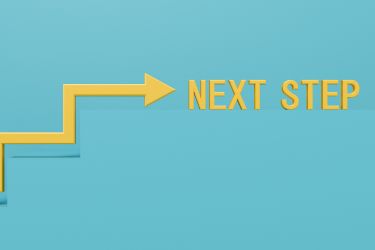
When trying to secure a new client, the presentation you give can make all the difference. Statistics and facts, combined with a large amount of text, are great for a report, but when considering a presentation, this won’t keep potential clients interested. What's needed is an approach that will keep your audience engaged, show value, and make saying yes uncomplicated.
It is important that after a presentation, your prospects leave thinking, "This person really understands my situation, and their solution makes sense." That requires creativity, planning, and meticulous attention to detail in every aspect of your presentation. Using creative sales presentation ideas to win more clients will help you achieve just that.

Begin with a simple outline of what you will discuss with your potential clients. A clear agenda slide provides an organized feeling to your presentation and is professional. When people know what to expect, they're more likely to stay engaged and follow along.
It's an area some presenters fail to address, but a well-structured agenda reassures your prospects that the meeting won't meander and will help you stay focused. Please provide approximate timings for key components, such as questions, the demo, and the closing discussion. That kind of clarity enables you to build credibility right from the start. A roadmap also supports smooth transitions. If the audience knows there will be interaction or a demonstration later, they'll stay tuned instead of zoning out.
Stories are far more memorable than bulleted lists. Instead, start with a scenario your prospect can relate to: describe the challenge, show how it played out, and explain how your solution made a difference. Framing your presentation as a narrative helps your listeners see themselves in the story and brings your message to the forefront.
Even brief anecdotes about previous clients can help move the conversation forward. For example, focusing on a case study about a business that faced similar issues and overcame them with your help demonstrates how your solution can be applied in real-life situations. That’s the heart of the problem‑agitate‑solution structure done well.
Storytelling doesn't belong only at the opening. You can weave narratives throughout your slides, such as during the demo, when sharing testimonials, or presenting results. The trick is in keeping your story thread alive so your audience stays invested.
Your audience wants to know: what's in it for me? A value proposition clearly communicates one's unique benefits in simple terms, focusing more on outcomes rather than raw features. Provide specific examples if you can: time saved, revenue increased, error rates reduced.
Including references to strong sales deck examples or winning pitch decks helps prospects visualize what success might look like. When you show concrete numbers—like “we reduced process time by X” or “this approach increased retention by Y,” you make the benefit real. Repeating your core benefit subtly throughout adds reinforcement without sounding repetitive.
Tying benefits back to broader business goals is another smart move. If your solution saves time, show how that extra time can be reallocated to growth initiatives or strategic tasks. By doing that, you'll make your value proposition feel directly relevant.
Showing the challenge that your prospect faces gives context to your solution. Lay out the problem, underscore what happens if it's ignored, then present your solution. This problem-agitate-solution flow helps your audience focus on why taking action is essential now.
Use real examples: perhaps a team loses several hours tracking manual tasks, or revenue leaks due to outdated workflows. Show how these issues compound over time. You can use visuals for this purpose: graphs or before-and-after comparisons make the stakes clear.
You could borrow from Quarterly Business Review deck ideas or other frameworks to illustrate how businesses often allow small inefficiencies to go unnoticed until they become significant problems. When the problem is focused and relatable, your solution becomes not only helpful but necessary.

Raw data can be convincing, but slides of numbers or solid blocks of tables may overwhelm your audience. Convert statistics into data visualization charts, graphs, infographics, or diagrams that are more easily digested. Well-designed visuals help your audience understand complex information quickly and remember it later.
Think about how the visuals support your storytelling: a timeline that shows how a client overcame a challenge with your solution, or a comparative bar graph showing before-and-after results. Even small design touches, such as icons or subtle animations, guide attention without distraction. The most interactive visuals are supremely compelling during demos. Clickable dashboards, for instance, or step-by-step walkthroughs let your audience explore the solution themselves; this is hugely engaging and builds trust.
Using visuals strategically also helps in highlighting your value proposition. Instead of only telling the prospects, show them those benefits manifesting into real numbers or outcomes. When combined with customer testimonials or case studies, visuals become a tool for both clarity and persuasion.
Remember, visuals are a storytelling tool. Every chart, graph, or icon should reinforce the key message of your slide, helping your audience understand the impact of your solution without needing to read a lengthy text. When used thoughtfully, visuals can turn a good presentation into a memorable one.
Demonstrating real-world impact is often one of the most persuasive aspects of a presentation. Customer testimonials give your audience tangible proof that your solution works.
For example, you may want to focus on one of your clients who experienced a very typical issue and overcame that problem with your solution. Include measurable results-revenue gains, efficiency improvements, or error reductions. Screenshots, quotes, or even short videos can bring these stories to life. Part of creative sales presentation ideas for winning more clients is including social proof, which reassures prospects that your approach has been successful elsewhere and can work for them.
Case studies can also be sprinkled throughout the presentation. This helps to reinforce the problem-agitate-solution framework, keeping your audience engaged. Each story of success subtly highlights the same core value proposition, making your solution feel both credible and attainable.

Show your potential clients in action through interactive demos. Focus on those aspects that are most relevant to your prospect's challenges. Even demonstrating one key process step can make your solution tangible and memorable.
It also allows your audience to explore on their own through interactive demos, drawing them in. Combining that with elements from sales deck examples will keep the presentation polished and structured. The key is to present the solution in an approachable way without overwhelming them with too much information.
Discovery-led pitching focuses on finding solutions by asking the right questions of a client. Prepare open-ended discovery questions that will help you understand challenges, priorities, and goals; tailor your presentation based on their responses.
Active listening conveys that you are interested in solving their particular problem, rather than just selling a product. It also allows you to shift the conversation to areas where your solution will have the most impact. This, mixed with interactive demos, will ensure your presentation feels customized and relevant.
Generic presentations rarely leave a lasting impression. Incorporate references to the client's brand, industry, or specific challenges throughout your slides. The personalization could be relevant statistics, competitor comparisons, or case studies that mirror the prospect's situation.
The presentation tailored to them is indicative of effort and attention to detail. The prospects are much more likely to trust someone who has obviously taken the time to understand their business, when you pair this with storytelling and social proof, engagement and credibility increase.

Sustaining participation keeps your presentation from being boring. Encourage participation with a poll, exercises, or even brief quizzes. You can also ask for questions throughout.
An interactive, consultative approach can make your pitch feel more like a collaboration than a one-sided sales pitch. It also improves retention: an engaged audience is far more likely to remember your points and respond to a call to action. Examples of best slides for sales deck design can also inspire ways to structure engagement points throughout the presentation naturally.
Objection handling is crucial for establishing trust. Plan for potential objections and address them proactively with relevant data or references. This avoids roadblocks later in the sales process and positions you as a prepared and knowledgeable professional. This demonstrates that you understand the challenges faced by prospects and are confident in your ability to deliver solutions. It also serves to reinforce your credibility and helps prospects feel comfortable moving forward.
Objections are also a great way to show that you are an authority on the subject matter by showing off what you know and how well you can think of solutions on the spot. Having a potential client object to something or ask a challenging question is also a great way to showcase examples of how you've handled similar issues with other clients.
Clarity is key. Eliminate the clutter and ensure each slide has one key takeaway. Use effective data visualization and build in visuals that support your story, leaving space for your audience to absorb the information.
Short, concise slides are much easier to follow and make your presentation appear more professional. Creative sales presentation ideas for winning more clients include emphasizing the value of simplicity, as this is crucial for creating a persuasive pitch.
Tailor your presentation to the audience and context: Shorter presentations are best suited for initial meetings, while longer ones may be more suitable for follow-up or QBR-style discussions. Even in longer presentations, mix storytelling, interactive demos, and visuals to keep the audience engaged.
Use best practices for the length of sales presentations to avoid overwhelming your audience and maintain the right tempo. Every slide in the presentation should have a purpose and emphasize your unique value proposition.

Every presentation should end with a strong call to action. Be clear about what you want the prospect to do next: schedule a demo, review a trial, or set up a follow-up discussion. Visual CTA slides really help to drive this final message home. When prospects can see what the action looks like, along with clearly understanding the benefits, they're far more likely to take the next step.
If you want to create presentations that help you close more deals consistently, don’t forget to subscribe to marketing updates.
Start with a clear roadmap slide outlining agenda and approximate timings. This reassures prospects, sets expectations, and shows professionalism, making them more willing to follow every section.
Stories create relatable context, trigger emotion, and are easier to remember than isolated facts. By illustrating a challenge and resolution, they help prospects visualize themselves succeeding with your solution and keep attention throughout the presentation.
Choose simple charts, graphs, infographics, or timelines that highlight one key takeaway each. Visuals should replace dense tables, support your narrative, and make results, comparisons, or progress instantly clear without overwhelming the audience.
Include concise case studies, client testimonials, and before-and-after metrics—revenue gains, time saved, error reductions. Screenshots, short videos, or interactive demos turn proof into vivid evidence, showing that your solution delivers measurable value in situations similar to the prospect's.
End with a clear, visual call to action detailing the exact next step—schedule a demo, start a trial, or book a follow-up. Stating benefits alongside the CTA simplifies decision-making and increases the likelihood that prospects immediately commit.